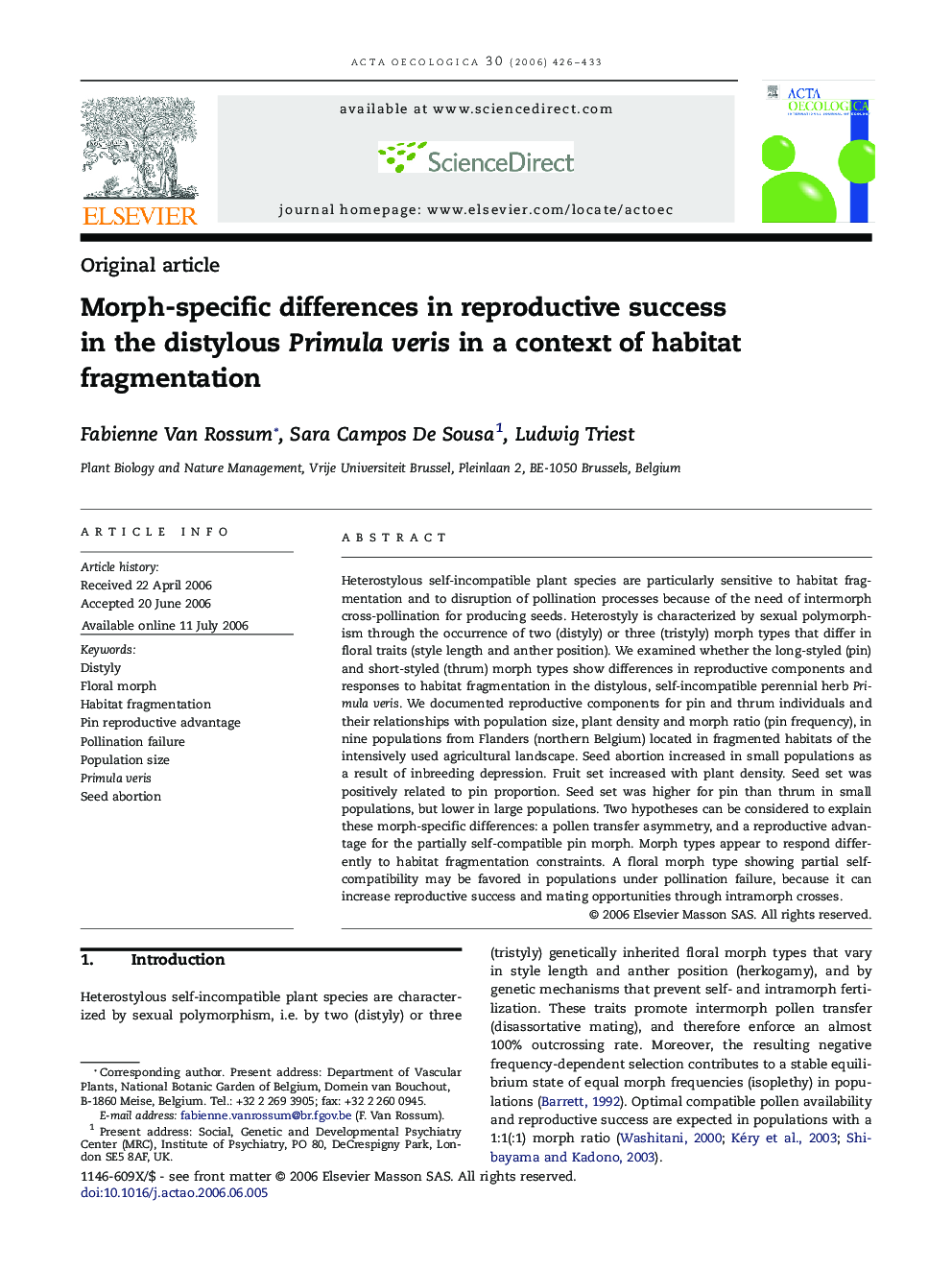| Article ID | Journal | Published Year | Pages | File Type |
|---|---|---|---|---|
| 4381721 | Acta Oecologica | 2006 | 8 Pages |
Heterostylous self-incompatible plant species are particularly sensitive to habitat fragmentation and to disruption of pollination processes because of the need of intermorph cross-pollination for producing seeds. Heterostyly is characterized by sexual polymorphism through the occurrence of two (distyly) or three (tristyly) morph types that differ in floral traits (style length and anther position). We examined whether the long-styled (pin) and short-styled (thrum) morph types show differences in reproductive components and responses to habitat fragmentation in the distylous, self-incompatible perennial herb Primula veris. We documented reproductive components for pin and thrum individuals and their relationships with population size, plant density and morph ratio (pin frequency), in nine populations from Flanders (northern Belgium) located in fragmented habitats of the intensively used agricultural landscape. Seed abortion increased in small populations as a result of inbreeding depression. Fruit set increased with plant density. Seed set was positively related to pin proportion. Seed set was higher for pin than thrum in small populations, but lower in large populations. Two hypotheses can be considered to explain these morph-specific differences: a pollen transfer asymmetry, and a reproductive advantage for the partially self-compatible pin morph. Morph types appear to respond differently to habitat fragmentation constraints. A floral morph type showing partial self-compatibility may be favored in populations under pollination failure, because it can increase reproductive success and mating opportunities through intramorph crosses.
